Coffee Basics
Coffee Lingo 101: From Aeropress To Venti

I have always been a fan of coffee, but it wasn’t until I began working at a coffee shop that I truly comprehended how much I had yet to learn about the realm of coffee.
From the different types of brewing methods to the specific vocabulary used in coffee shops, it can seem overwhelming to navigate the world of coffee and espresso.
That’s where this article comes in – Coffee Lingo 101: From AeroPress to Venti.
In this comprehensive guide, we’ll explore the basics of coffee brewing, the different types and varieties of coffee, and the vocabulary used in coffee shops.
Whether you’re a seasoned coffee drinker or just starting out on your coffee journey, this article will provide you with the knowledge and confidence to order your favorite coffee and impress your friends with your newfound coffee expertise.
So sit back, grab a cup of your favorite brew, and let’s dive into the world of coffee lingo.
Key Takeaways
- Coffee brewing is both a science and an art, and there are various methods to achieve the perfect cup.
- Understanding coffee lingo is important when ordering at a coffee shop, and baristas have their own vocabulary to communicate about coffee.
- Coffea arabica is the most commonly cultivated coffee plant and has a smoother taste, while Coffea robusta has a harsher taste and represents 43% of global coffee production.
- Learning about coffee types, varieties, and brewing methods can enhance one’s appreciation for coffee and make them look like a coffee connoisseur.
Brewing Methods
I love learning about different coffee brewing methods such as cold brew and French press, which I know are part science and part art.
Cold brew coffee, for instance, is made by steeping coffee grounds in cold water for an extended period. This method results in a smoother, less acidic taste.
French press, on the other hand, is a classic brewing method that involves steeping coarsely ground coffee beans in hot water and then pressing the plunger to separate the grounds from the liquid. This method produces a rich, full-bodied cup of coffee.
Another brewing method that I find fascinating is the AeroPress, a manual device that uses air pressure to extract coffee. With this method, coffee grounds are steeped in hot water and then pressed through a filter using a plunger.
Turkish coffee, on the other hand, is a traditional method of brewing coffee where finely ground coffee is boiled in a pot with water. This method produces a strong, flavorful cup of coffee.
It’s amazing to see how the different brewing methods can produce such distinct and unique flavors in coffee.
Coffee Types and Varieties
Imagine a world where there’s only one type of coffee bean, and every cup tastes the same – like drinking water with a hint of bitterness. Fortunately, we don’t live in that world.
There are two main types of coffee beans that dominate the industry: Coffea arabica and Coffea robusta. Coffea arabica is known for its smoother taste and represents about 60% of global coffee production. On the other hand, Coffea robusta is harsher and has a higher caffeine content. It represents about 43% of global coffee production and is commonly used in instant coffee and espresso blends.
But the fun doesn’t stop there. Within each type of coffee bean, there are also different varieties and cultivars, each with its own unique characteristics. For example, the coffee cherry, which contains two pits (or beans), can produce Specialty Peaberries. These are rare and often sold separately as specialty coffee due to their unique shape and flavor profile.
Additionally, different geographical areas can grow the same varietal of coffee, but the taste can vary depending on factors such as altitude and soil composition.
Overall, the world of coffee types and varieties is vast and offers endless possibilities for coffee lovers to explore and enjoy.
Cafe Vocabulary
Learning the vocabulary used in cafes is crucial for accurately ordering your favorite coffee drinks. As a barista, I’ve seen many customers make the mistake of ordering their drinks incorrectly due to a lack of understanding of coffee lingo.
For example, some customers will order a latte with extra foam, not realizing that a latte is made with steamed milk and a small amount of foam, while a cappuccino has more foam and less milk. It’s important to know the difference between these drinks to ensure you receive the beverage you desire.
Ordering etiquette is also important in the coffee shop industry. It’s common courtesy to wait patiently in line and to have your order ready when it’s your turn. It’s also polite to know what you want before approaching the barista to prevent holding up the line.
Additionally, tipping your barista is expected in the industry and is a way to show appreciation for their hard work. By familiarizing yourself with common coffee shop vocabulary and ordering etiquette, you can ensure a smooth and enjoyable experience at your local cafe.
Industry Terminology
Growing up, I always thought the coffee industry was just about brewing and serving coffee, but after working as a barista, I realized it is a complex world with its own terminology and set of rules. One of the most important aspects of the industry is roasting techniques. Roasting is the process of heating green coffee beans to transform them into the aromatic, flavorful, and recognizable brown beans we all know and love. There are different roasting techniques that affect the flavor, aroma, and body of the coffee. For example, light roasts have a brighter acidity and more subtle flavors, while dark roasts have a stronger and more bitter taste.
Another important aspect of the coffee industry is sustainability practices. As the demand for coffee increases, it is important to ensure that coffee farming is done in a way that is environmentally friendly and socially responsible. Many coffee companies now offer fair trade, organic, and shade-grown coffee options to promote sustainable practices. Additionally, some companies have started to implement sustainable practices in their own operations, such as using renewable energy and reducing waste. As a barista, it is important to understand and support these practices in order to promote a better future for the industry and the environment.
| Roasting Techniques | Flavor Profile | Examples |
|---|---|---|
| Light Roast | Bright acidity, subtle flavors | Breakfast Blend, Ethiopian Yirgacheffe |
| Medium Roast | Balanced acidity and flavor | Colombian, Costa Rican |
| Dark Roast | Strong and bitter taste | French Roast, Italian Roast |
| Sustainability Practices | Examples | |||
|---|---|---|---|---|
| Fair Trade | Equal pay for farmers, sustainable farming practices | |||
| Organic | No use of synthetic pesticides or fertilizers | |||
| Shade-Grown | Coffee grown under a canopy of trees, preserving biodiversity | |||
| Renewable Energy | Use of solar or wind power to reduce carbon footprint | |||
| Waste Reduction | Recycling and composting to reduce waste in operations | Fair Trade | Ensuring fair prices and working conditions for coffee farmers and workers |
Becoming a Coffee Connoisseur
I’ve always been fascinated by the world of specialty coffee and the intricate flavors and aromas that can be found in each unique cup. As I delve deeper into the world of coffee, I’m learning that there is so much more to it than just brewing methods and industry terminology.
Becoming a coffee connoisseur means exploring different roasts and developing coffee tasting techniques to truly appreciate the nuances of each cup.
One of the first things I learned on my journey to becoming a coffee connoisseur is the importance of understanding the different roast levels. From light to dark, each roast brings out different flavors and aromas in the coffee. It’s important to taste and compare different roasts to fully appreciate the complexity of coffee.
Tasting techniques such as cupping, where coffee is brewed and tasted in a controlled environment, can also help to develop a deeper understanding of the flavors and aromas in each cup.
With each new cup, I’m discovering more about the intricacies of specialty coffee and I can’t wait to continue exploring and learning.
Frequently Asked Questions
What are the health benefits and risks associated with coffee consumption?
Did you know that coffee is the most commonly consumed psychoactive substance worldwide? Benefits vs Risks is a hot topic in coffee consumption. Moderation vs Overconsumption is key to avoiding negative effects on mental health.
What is the history of coffee and how has it evolved over time?
Coffee culture has evolved over centuries, impacting global economy. From its origins in Ethiopia to today’s diverse industry, coffee has been traded, brewed, and enjoyed worldwide. Its rich history is a testament to its enduring popularity.
How do different regions and climates affect the taste of coffee?
Soil composition and altitude greatly impact the flavor of coffee. Regional coffee culture also plays a role in production, as people’s preferences influence the varietals and methods used. As a coffee enthusiast, I find the science behind it all fascinating.
How do you properly store and grind coffee beans for optimal flavor?
As a coffee enthusiast, I know that proper storage and grinding of coffee beans is crucial for optimal flavor. I always store my beans in an airtight container, away from sunlight and moisture. I also adjust my grind size according to the brewing method and roast level to ensure the perfect cup.
What are some common mistakes people make when brewing coffee and how can they be avoided?
Brewing tips: Common mistakes include using stale beans, not measuring accurately, using water that is too hot or cold, and not cleaning equipment properly. Avoid these by using fresh beans, measuring precisely, using the right temperature, and cleaning regularly.
Conclusion
Well, that’s it, folks – you’re now officially initiated into the world of coffee!
From the different brewing methods to the various coffee types and varieties, you’ve learned all the basics.
Not to mention, you’ve also mastered the lingo used in coffee shops and have become well-versed in the industry terminology.
By now, you can confidently walk into any coffee shop and order your favorite drink like a true coffee connoisseur.
Heck, you could even start your own coffee shop with the knowledge you’ve acquired! Okay, that may have been a bit of a hyperbole, but you get the point.
All jokes aside, coffee truly is a magical beverage that brings people together.
And with this newfound knowledge, you can appreciate it even more.
So go ahead, take a sip of that perfectly brewed cup of joe and savor the moment.
You deserve it.
Justin is a seasoned author, coffee and tea enthusiast, and an essential member of the Cappuccino Oracle team. With a keen appreciation for the complexities of coffee, coffee alternatives, and tea, Justin has dedicated his professional career to exploring these realms and sharing his insights with readers worldwide.
Justin’s immersion in the world of coffee, coffee alternatives, and tea began at a young age, kindling a passion that extended beyond mere consumption. This love for these beverages led him to combine his talent for writing with his devotion to coffee and tea, bringing him to Cappuccino Oracle as a dedicated author.
Coffee Basics
How Does a Coffee Maker Works

We are going to explore the exciting realm of coffee makers. Get ready to be amazed as we uncover the complex mechanisms of these incredible machines.
From the basic components and water heating mechanisms to the brewing process and the importance of filters, we will leave no stone unturned.
So grab a cup of joe and join us as we delve into the inner workings of how a coffee maker works.
Key Takeaways
- The coffee maker consists of basic components such as a water reservoir, heating element, filter basket, and carafe.
- The water is heated in the heating element to the desired temperature, and a temperature control mechanism maintains the desired temperature.
- The brewing process involves pre-infusion, extraction through hot water sprayed over coffee grounds, filtration, and temperature control for consistent flavor.
- The quality of filters and grind size play a crucial role in the taste and flavor of the brewed coffee.
Basic Components of a Coffee Maker
The basic components of a coffee maker include a water reservoir, a heating element, a filter basket, and a carafe. These components work together to ensure a smooth coffee-making process.

Coffee maker maintenance is crucial to keep these components in good working condition. Regular cleaning of the water reservoir prevents the buildup of mineral deposits, which can affect the taste of your coffee.
The heating element should be checked for any signs of damage or malfunction and replaced if necessary. Clogged filter baskets can lead to weak or bitter coffee, so it’s important to clean them regularly.
Troubleshooting common coffee maker problems involves checking for issues such as leaks, slow brewing, or uneven coffee extraction. By understanding and maintaining these basic components, you can ensure a consistently delicious cup of coffee.
Water Heating and Dispensing Mechanism
How does the coffee maker heat and dispense water?

The water heating and dispensing mechanism in a coffee maker involves a complex process that ensures the water is heated to the optimal temperature and distributed evenly for brewing.
When you pour water into the coffee maker’s reservoir, it’s drawn into the heating element through a tube using a water circulation system.
The heating element, usually a heating coil, heats the water to the desired temperature, typically between 195-205 degrees Fahrenheit.
The temperature control mechanism ensures that the water remains at the desired temperature throughout the brewing process.

Once the water reaches the desired temperature, it’s dispensed through a showerhead or spray nozzle evenly over the coffee grounds in the filter basket.
This allows for an even extraction of flavors and ensures a delicious cup of coffee.
Brewing Process and Extraction of Coffee
Our coffee maker’s brewing process and extraction of coffee rely on the precise combination of water, heat, and ground coffee beans. This intricate process involves several extraction techniques and careful control of the brewing temperature. Here’s a breakdown of how our coffee maker achieves the perfect cup of coffee:
- Pre-infusion: The brewing process begins with a short pause, allowing the coffee grounds to bloom and release their flavors.
- Extraction: Hot water is then sprayed over the coffee grounds, extracting the desired flavors and oils.
- Brewing time: The water and coffee mixture is allowed to steep for a specific duration, ensuring optimal extraction.
- Filtration: The brewed coffee passes through a filter, separating the grounds from the liquid.
- Temperature control: Throughout the brewing process, the coffee maker carefully maintains the ideal brewing temperature, ensuring a consistent and flavorful cup of coffee.
Importance of Filters in Coffee Makers
To understand the importance of filters in coffee makers, let’s explore how they contribute to the overall quality of your brew. The role of paper filters in coffee makers is crucial as they play a significant part in ensuring that your coffee tastes its best. Filters are responsible for removing unwanted particles and oils from the coffee grounds, resulting in a cleaner and smoother cup of joe. The impact of filter quality on coffee taste cannot be underestimated. A high-quality filter will effectively trap sediments and oils, preventing them from reaching your cup and imparting bitterness or unwanted flavors. On the other hand, a low-quality filter may allow these undesirable elements to pass through, leading to an inferior coffee experience. Therefore, investing in good quality filters is essential for achieving a delicious and enjoyable brew.

| Filter Quality | Impact on Coffee Taste |
|---|---|
| High | Cleaner, smoother, better taste |
| Medium | Acceptable taste |
| Low | Bitterness, unwanted flavors |
Understanding the Role of Grind Size
Grind size plays a crucial role in the brewing process of a coffee maker. It directly affects the taste and flavor of the coffee that’s brewed.
Here are some key points to understand the impact of grind size on the extraction efficiency:
- Size matters: The grind size determines the surface area of the coffee particles that come into contact with water during brewing.
- Flavor extraction: Finer grind sizes increase the extraction of flavors, resulting in a stronger and more intense coffee taste.
- Brewing time: Coarser grind sizes require longer brewing times to achieve optimal extraction, while finer grind sizes extract quickly.
- Extraction control: By adjusting the grind size, you can control the extraction process and fine-tune the flavor profile of your coffee.
- Consistency is key: Consistent grind size ensures even extraction and a balanced flavor in every cup.
Understanding the relationship between grind size and coffee flavor is essential for achieving the perfect brew with your coffee maker.
Frequently Asked Questions
How Much Coffee Should I Use in a Coffee Maker?
When it comes to brewing coffee, it’s crucial to consider the coffee measurements for optimal taste. Different brewing techniques require different ratios, but generally, a good starting point is using 1-2 tablespoons of coffee per 6 ounces of water.
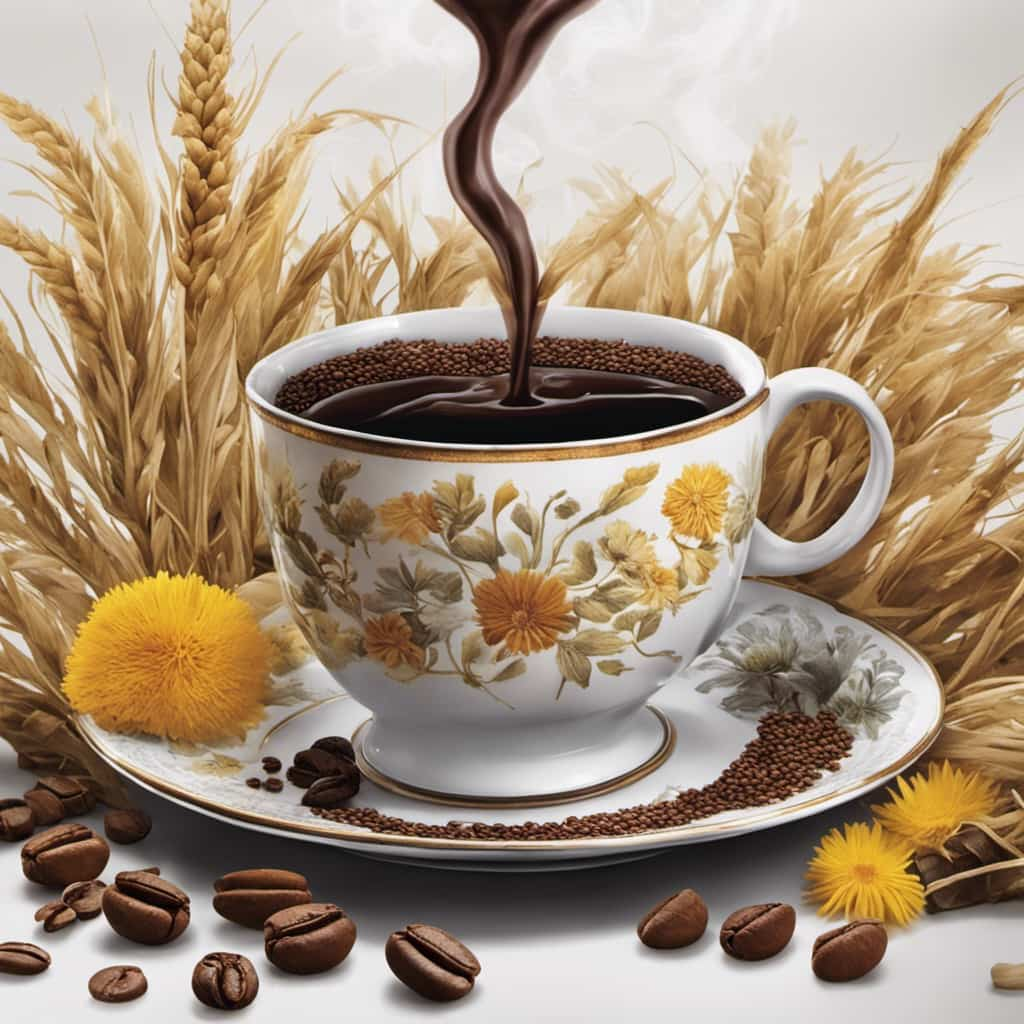
Can I Use Instant Coffee in a Coffee Maker?
Sure, we can definitely use instant coffee in a coffee maker. The pros include convenience and speed, while the cons may be a compromise in taste and quality. It’s a trade-off, but it works.
How Long Does It Take for a Coffee Maker to Brew a Full Pot of Coffee?
The brewing time of a coffee maker can vary depending on several factors. These factors include the type of coffee maker, the size of the pot, the desired strength of the coffee, and the brewing method used.
Can I Use Tea Leaves Instead of Coffee Grounds in a Coffee Maker?
Using tea bags instead of coffee grounds in a coffee maker has pros and cons. The pros include convenience and variety, while the cons include potential flavor contamination and residue buildup.
Is It Possible to Make Iced Coffee Using a Coffee Maker?
Yes, it is possible to make iced coffee using a coffee maker. There are various iced coffee recipes and alternative brewing methods that can be used to achieve a refreshing and delicious cold coffee drink.

Conclusion
In conclusion, understanding how a coffee maker works involves grasping the intricacies of its basic components, water heating and dispensing mechanism, brewing process, extraction of coffee, and the importance of filters.
By comprehending the role of grind size, one can further enhance the flavor and quality of their brewed coffee.
Just as the saying goes, ‘A well-oiled machine,’ a coffee maker operates with precision and efficiency, ensuring a delightful cup of joe every time.
Justin is a seasoned author, coffee and tea enthusiast, and an essential member of the Cappuccino Oracle team. With a keen appreciation for the complexities of coffee, coffee alternatives, and tea, Justin has dedicated his professional career to exploring these realms and sharing his insights with readers worldwide.
Justin’s immersion in the world of coffee, coffee alternatives, and tea began at a young age, kindling a passion that extended beyond mere consumption. This love for these beverages led him to combine his talent for writing with his devotion to coffee and tea, bringing him to Cappuccino Oracle as a dedicated author.
Coffee Basics
How Can I Get Coffee Delivered

Do you find yourself frustrated with the long queues at the coffee shop every morning?
Well, we’ve got some exciting news for you! We’ve discovered a variety of convenient ways to have coffee delivered right to your doorstep.
From local coffee shop delivery services to online subscriptions and grocery store options, there’s a delivery method to suit every coffee lover’s needs.
Get ready to say goodbye to long queues and hello to the delightful aroma of freshly brewed coffee at home.
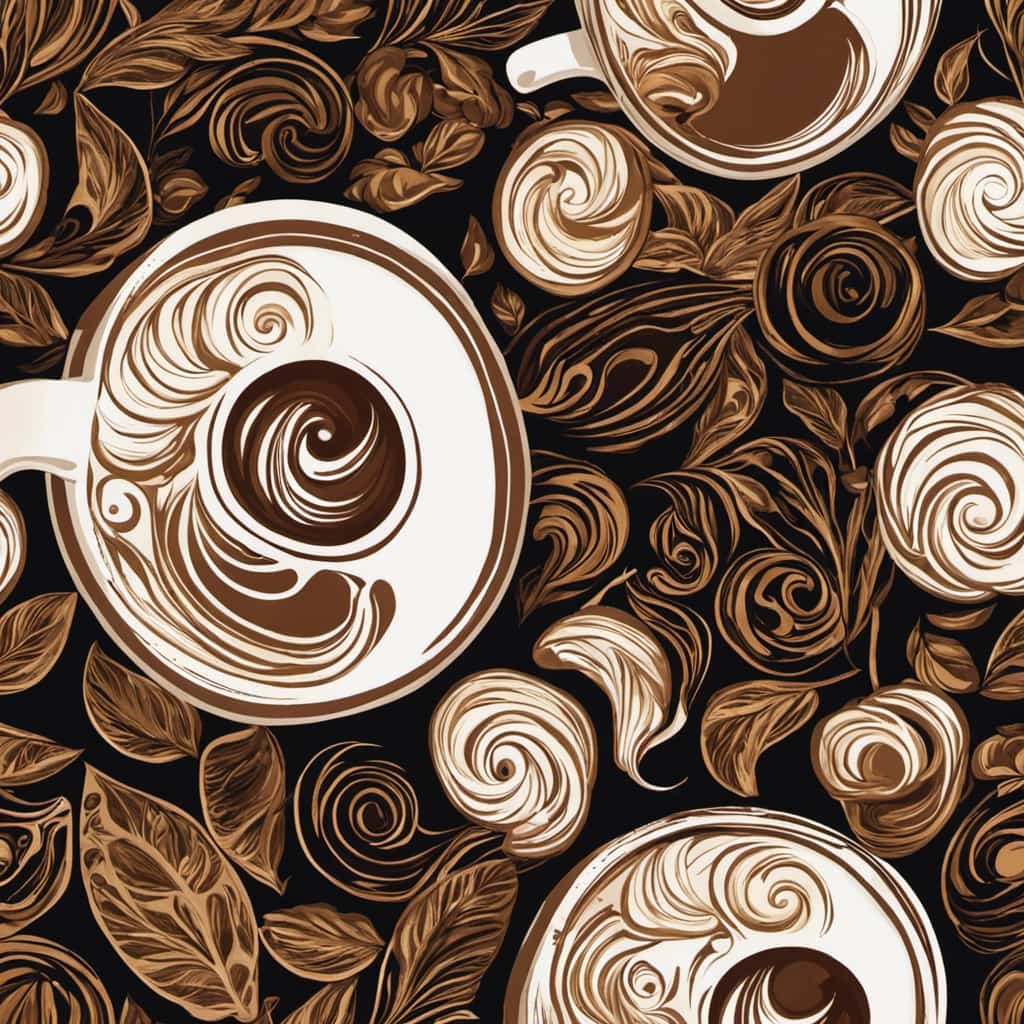
Key Takeaways
- Local coffee shops offer convenient delivery services through coffee delivery apps.
- Online coffee subscription services provide customizable options for coffee delivery.
- Grocery stores offer online ordering and delivery services for coffee.
- Food delivery apps offer a wide range of coffee delivery options from various coffee shops.
Local Coffee Shop Delivery Services
Our favorite local coffee shop, Joe’s Cafe, offers a convenient delivery service for all coffee lovers in the area. With the rise of coffee delivery apps, it has become easier than ever to enjoy your favorite brew from the comfort of your own home or office.
Joe’s Cafe has partnered with these apps to bring their delicious coffee straight to your doorstep. The pricing for their coffee delivery service is reasonable and competitive, ensuring that you can enjoy a fresh cup of joe without breaking the bank.
Whether you prefer a classic latte or a bold espresso, Joe’s Cafe has you covered. Simply download the app, browse their menu, place your order, and sit back as your coffee is delivered right to you.
It’s never been easier to satisfy your caffeine cravings.

Online Coffee Subscription Services
We love exploring different coffee options, and one convenient way to do that’s through online coffee subscription services. These services offer a variety of online coffee delivery options, allowing you to have your favorite beans or blends delivered right to your doorstep.
One of the benefits of coffee subscription services is the convenience they offer. You can choose the type of coffee you want, the frequency of delivery, and even customize your order based on your preferences. Additionally, many subscription services work directly with coffee roasters, ensuring that you receive fresh and high-quality coffee every time.
With online coffee subscription services, you can easily discover new flavors and expand your coffee palate without leaving your home.
Now, let’s move on to explore grocery store delivery options.
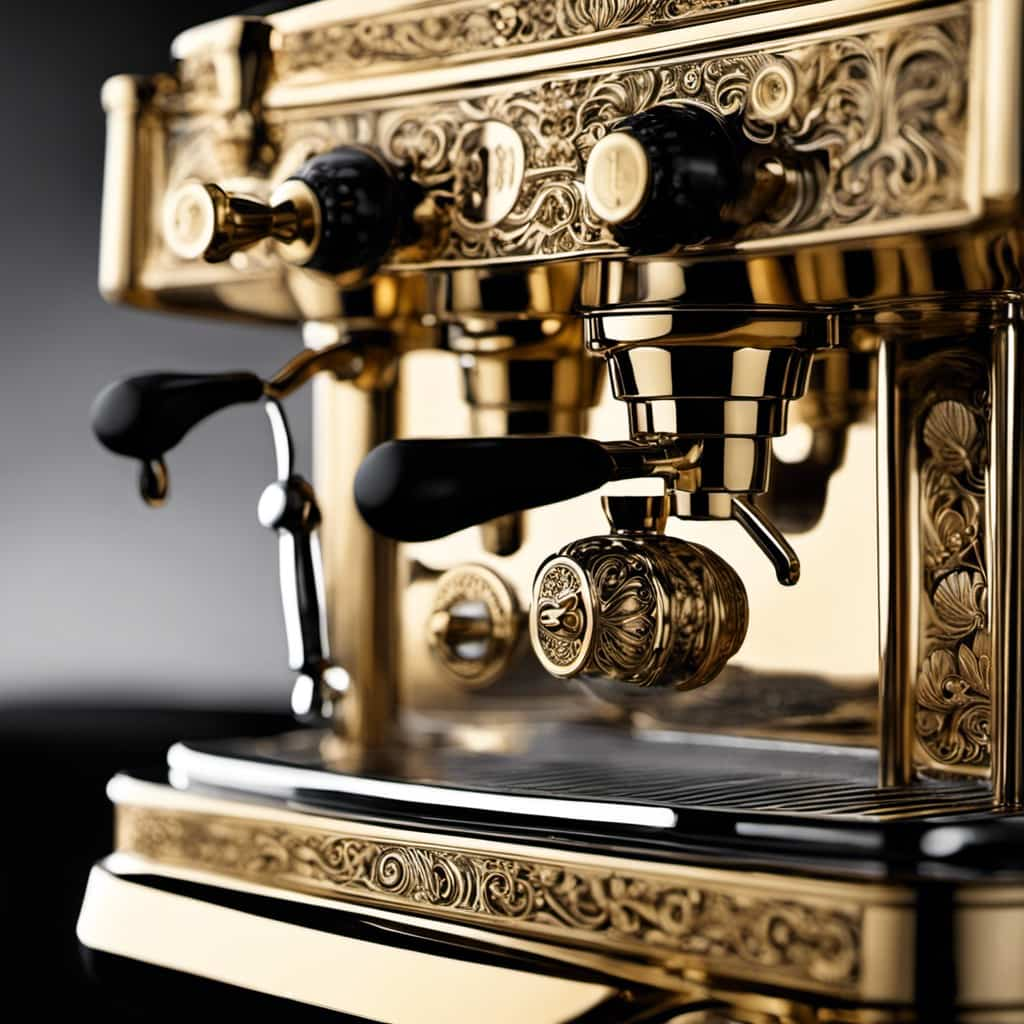
Grocery Store Delivery Options
Sometimes, grocery stores offer coffee delivery services that allow us to conveniently have our favorite beans or blends delivered right to our doorstep. Here are three grocery store delivery options to consider:
- Online Ordering: Many grocery stores now have websites or mobile apps where you can browse their coffee selection, place an order, and schedule a delivery. This option provides the convenience of shopping from the comfort of your home.
- Meal Kit Delivery: Some grocery stores offer meal kit delivery services that include coffee as part of their packages. These meal kits are designed to provide you with all the ingredients needed to cook a specific meal, and they often include coffee as a beverage option.
- Convenience Store Delivery: In addition to traditional grocery stores, some convenience stores now offer delivery services. These stores typically have a limited selection of coffee options, but they can be a convenient option for those who need their coffee fix quickly.
With these grocery store delivery options, you can easily get your favorite coffee delivered to your doorstep without having to leave the comfort of your home.
Food Delivery Apps That Offer Coffee
Continuing from the previous subtopic, we can explore the convenience of ordering coffee through food delivery apps.
These apps provide a wide range of coffee delivery options, allowing you to enjoy your favorite brew from the comfort of your home or office. Whether you prefer a classic cup of black coffee or a fancy espresso-based drink, these apps have got you covered.
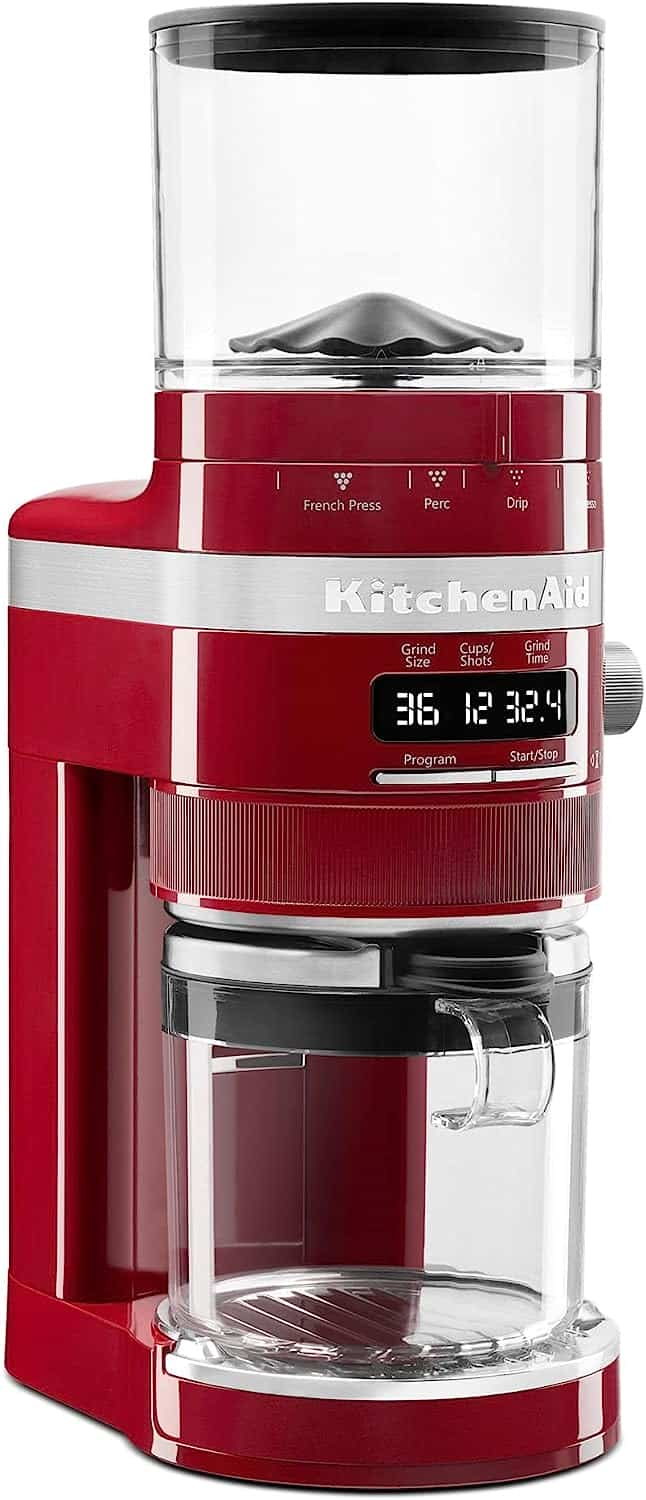
With just a few taps on your smartphone, you can browse through various coffee shops and choose your desired blend. However, it’s important to note that some food delivery apps may charge additional coffee delivery fees. Therefore, it’s advisable to check the app’s fee structure before placing your order.
Now, let’s move on to the next section where we’ll discuss specialty coffee roasters with nationwide shipping.
Specialty Coffee Roasters With Nationwide Shipping
Many specialty coffee roasters offer nationwide shipping for their unique blends.
Here are three specialty coffee roasters that prioritize direct trade coffee sourcing and single origin coffee beans:

- Blue Bottle Coffee: Blue Bottle Coffee is known for its commitment to sourcing high-quality, single origin coffee beans. They have a variety of blends and single origin options available for delivery nationwide. Their coffee is sourced through direct trade relationships, ensuring fair wages and sustainable practices.
- Intelligentsia Coffee: Intelligentsia Coffee is dedicated to sourcing single origin coffee beans directly from farmers around the world. They have an extensive selection of coffee beans, including limited edition releases and seasonal offerings. Their nationwide shipping allows coffee lovers to enjoy their unique blends no matter where they are.
- Stumptown Coffee Roasters: Stumptown Coffee Roasters sources their coffee through direct trade relationships with farmers. They offer a wide range of single origin and blended coffee options, all roasted to perfection. With nationwide shipping, customers can experience the exceptional taste of Stumptown coffee from the comfort of their homes.
These specialty coffee roasters provide coffee enthusiasts with the convenience of nationwide shipping while maintaining a focus on direct trade coffee sourcing and single origin coffee beans.
Frequently Asked Questions
Can I Customize My Coffee Order With Specific Flavors or Milk Options?
Yes, you can customize your coffee order with specific flavors or milk options. Our menu offers a variety of options for customized coffee flavors and milk preferences to satisfy your unique taste preferences.
Are There Any Discounts or Loyalty Programs Available for Regular Coffee Delivery Customers?
There are discount options and customer rewards available for regular coffee delivery customers. We offer a variety of discounts and loyalty programs to ensure that our customers feel appreciated and receive the best value for their coffee deliveries.
How Do I Ensure That My Coffee Will Be Delivered at the Right Temperature for Optimal Taste?
To ensure optimal taste, we recommend following best practices for storing coffee beans and using reputable coffee delivery services. This guarantees that your coffee will be delivered at the right temperature for a satisfying cup every time.
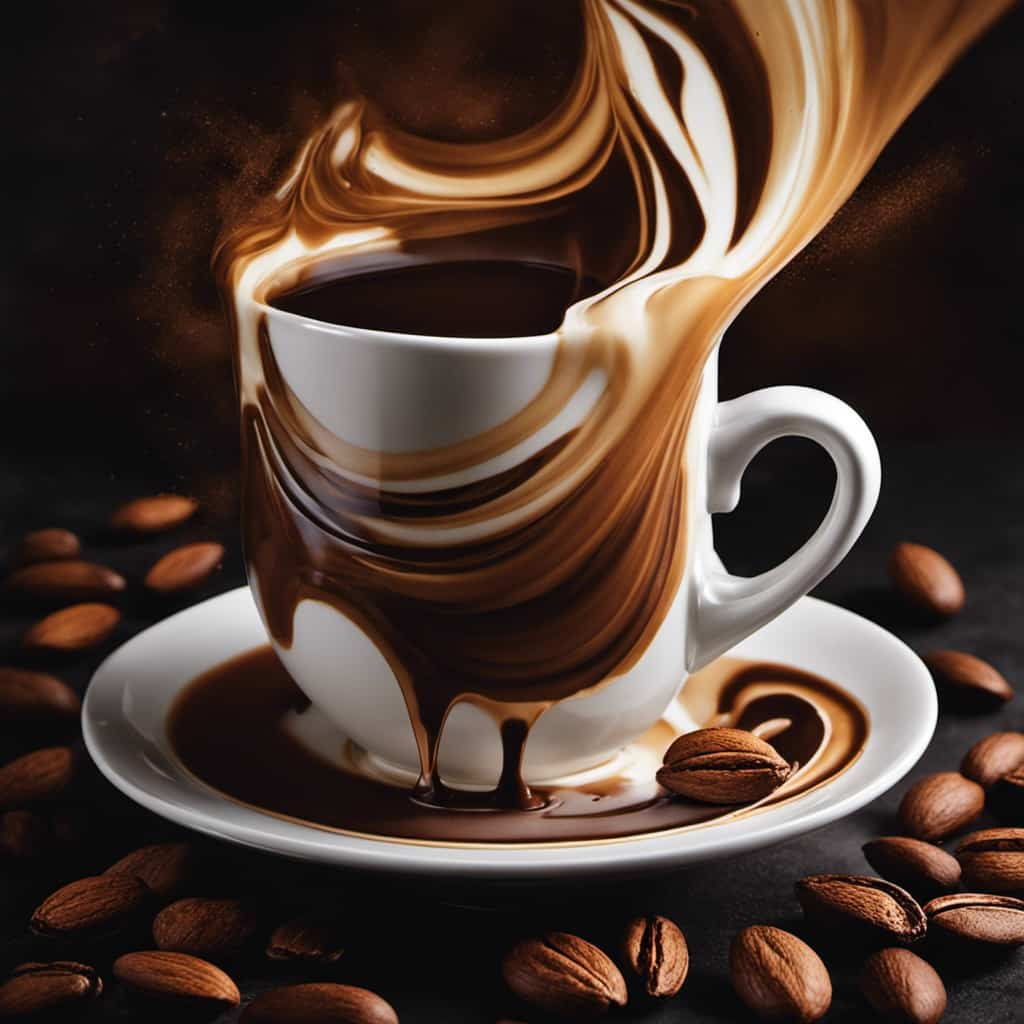
Can I Schedule Recurring Coffee Deliveries to Ensure I Never Run Out of My Favorite Brew?
To ensure scheduling convenience and never run out of our favorite brew, we can set up recurring coffee deliveries. This way, we can enjoy the taste of our preferred coffee without worrying about alternative options.
Are There Any Environmentally-Friendly Packaging Options Available for Coffee Delivery?
When it comes to coffee delivery, we prioritize sustainability. Rest assured, our service offers a range of eco-friendly options for packaging. We strive to minimize our environmental impact while delivering your favorite brew.
Conclusion
In conclusion, whether you’re craving a cup of joe in the comfort of your own home or need a caffeine fix delivered to your office, there are plenty of options available to get coffee delivered right to your doorstep.
From local coffee shops and online subscription services to grocery stores and food delivery apps, you can easily satisfy your coffee cravings without leaving your house.
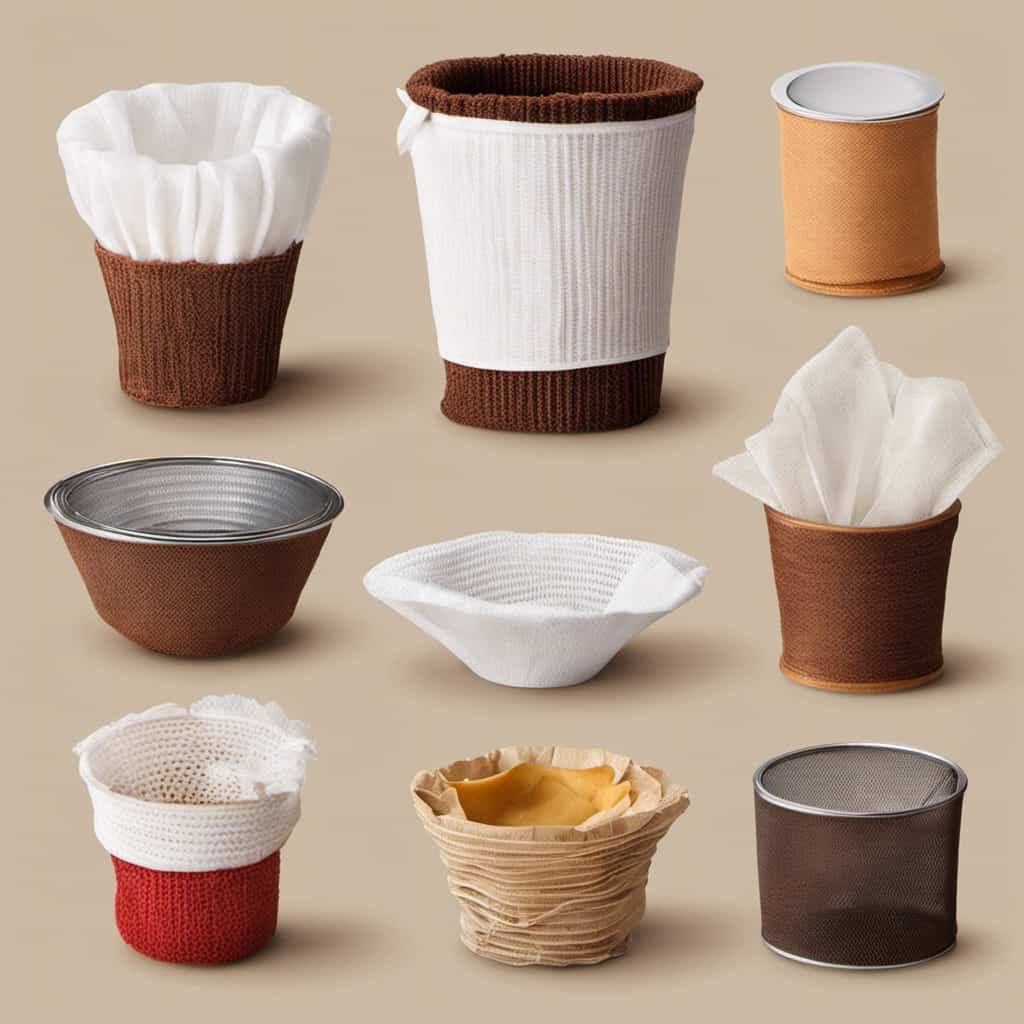
So why wait? Treat yourself to a piping hot brew and let the coffee come to you.
Justin is a seasoned author, coffee and tea enthusiast, and an essential member of the Cappuccino Oracle team. With a keen appreciation for the complexities of coffee, coffee alternatives, and tea, Justin has dedicated his professional career to exploring these realms and sharing his insights with readers worldwide.
Justin’s immersion in the world of coffee, coffee alternatives, and tea began at a young age, kindling a passion that extended beyond mere consumption. This love for these beverages led him to combine his talent for writing with his devotion to coffee and tea, bringing him to Cappuccino Oracle as a dedicated author.
Coffee Basics
Does Vanilla Bean Have Coffee

The enticing aroma of vanilla fills the air, tantalizing our senses and sparking intrigue. Exploring the realm of vanilla beans leads us on a quest to dispel a widespread misunderstanding.
Does this beloved flavor contain hints of coffee? Join us as we explore the origins, flavor profile, and chemical composition of vanilla bean.
Together, we’ll uncover the truth and settle the age-old question: does vanilla bean have coffee?
Key Takeaways
- Vanilla bean is derived from the orchid Vanilla planifolia, while coffee comes from the Coffea plant.
- Vanilla bean has its own distinct flavor profile, characterized by sweet and floral notes, while coffee has a rich and bold taste with hints of bitterness.
- Vanilla bean does not contain any coffee, and the misconception that it does is false.
- Vanilla bean is commonly used in baking and cooking to add a rich, sweet flavor to dishes, and it offers health benefits due to its antioxidant content.
The Origins of Vanilla Bean
Vanilla bean originates from the orchid Vanilla planifolia. This tropical orchid is native to Mexico and Central America. Vanilla bean cultivation requires specific growing conditions, including warm temperatures, high humidity, and well-drained soil. The plant typically grows as a vine, with long green stems that can reach up to 30 feet in length.

The vanilla bean itself is the fruit of the orchid, which is harvested when it reaches maturity. Historically, vanilla bean has been used for a variety of purposes. The ancient Mayans and Aztecs used it as a flavoring for their chocolate beverages, while Europeans later discovered its aromatic qualities and began using it in baking and cooking.
Today, vanilla bean continues to be a popular ingredient in a wide range of culinary creations, from desserts to beverages.
The Flavor Profile of Vanilla Bean
Why does vanilla bean have such a distinct and sought-after flavor?
The flavor profile of vanilla bean is characterized by its rich, sweet, and creamy taste. However, it’s the aroma of vanilla bean that truly sets it apart.
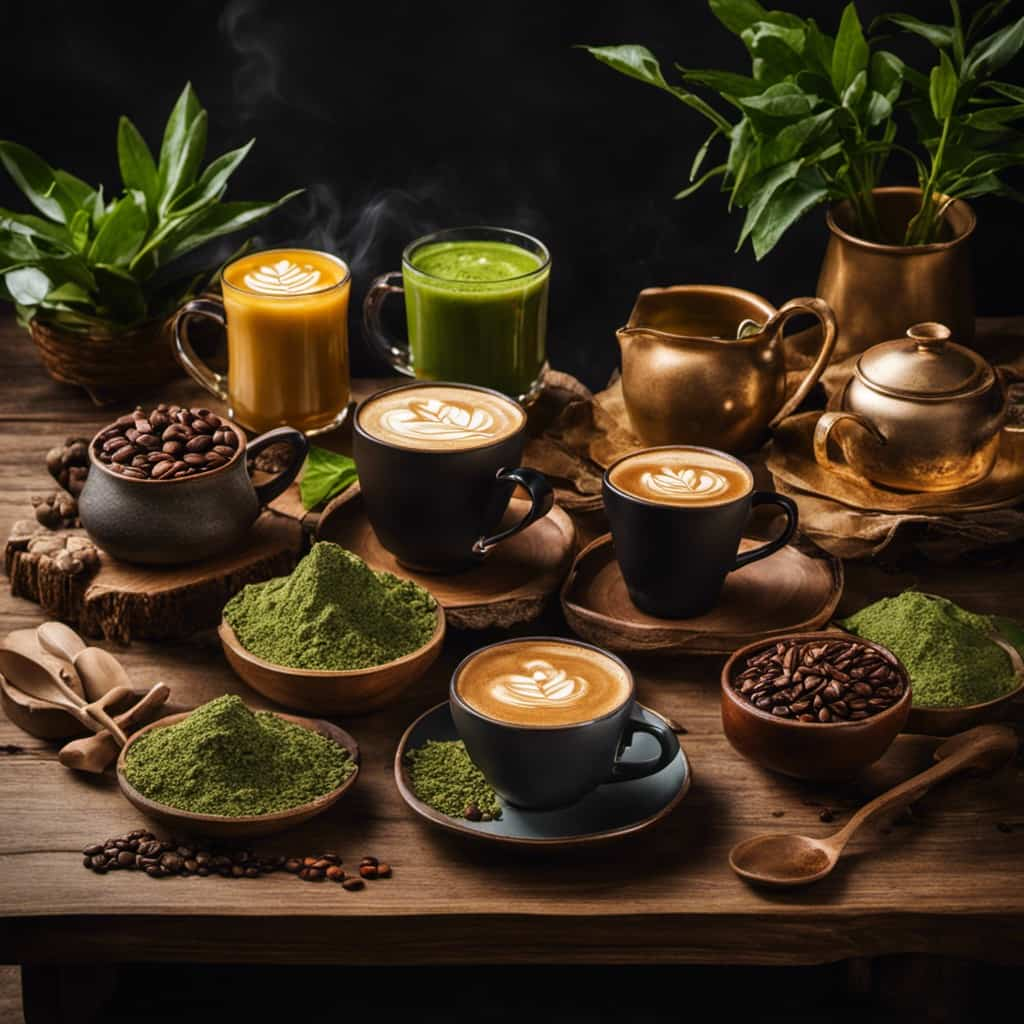
The beans emit a warm and inviting scent that’s often described as floral, with hints of caramel and chocolate. This unique fragrance adds depth and complexity to dishes, making it a popular ingredient in both sweet and savory recipes.
Vanilla bean is commonly used in baking, where its sweet and aromatic qualities enhance the flavors of cakes, cookies, and custards. It’s also used in beverages, such as coffee and cocktails, to provide a subtle and alluring aroma.
With its versatile and exquisite flavor profile, vanilla bean continues to be a staple in culinary creations.
The Common Misconception About Coffee in Vanilla Bean
Continuing our exploration of vanilla bean’s flavor profile, it’s important to address a common misconception about the presence of coffee in vanilla bean. Contrary to popular belief, vanilla bean doesn’t contain any coffee. This is one of the common myths surrounding vanilla bean that has been perpetuated over the years.

To clarify any confusion, here are some key points to consider:
- Vanilla bean is derived from the orchid plant, while coffee comes from the beans of the Coffea plant.
- Vanilla bean has its own distinct flavor profile, characterized by its sweet and floral notes.
- Coffee, on the other hand, has a rich and bold taste with hints of bitterness.
- While both vanilla and coffee are often used together in various recipes, they’re separate ingredients with unique properties.
It is important to debunk these misconceptions to ensure accurate information is shared about vanilla bean and its health benefits.
The Chemical Composition of Vanilla Bean
To understand the chemical composition of vanilla bean, we need to examine its unique blend of compounds. Vanilla bean contains a variety of compounds that contribute to its distinct flavor and aroma. One of the key compounds found in vanilla bean is vanillin, which is responsible for its sweet and creamy taste. Other compounds present in vanilla bean include eugenol, which gives it a subtle spicy note, and coumarin, which adds a hint of bitterness.
The extraction methods of vanilla bean involve soaking the beans in alcohol to release these compounds. In addition to its delicious taste, consuming vanilla bean has been associated with several health benefits. It’s rich in antioxidants, which can help protect against oxidative stress and inflammation. Furthermore, vanilla bean has been found to have potential anti-cancer properties.
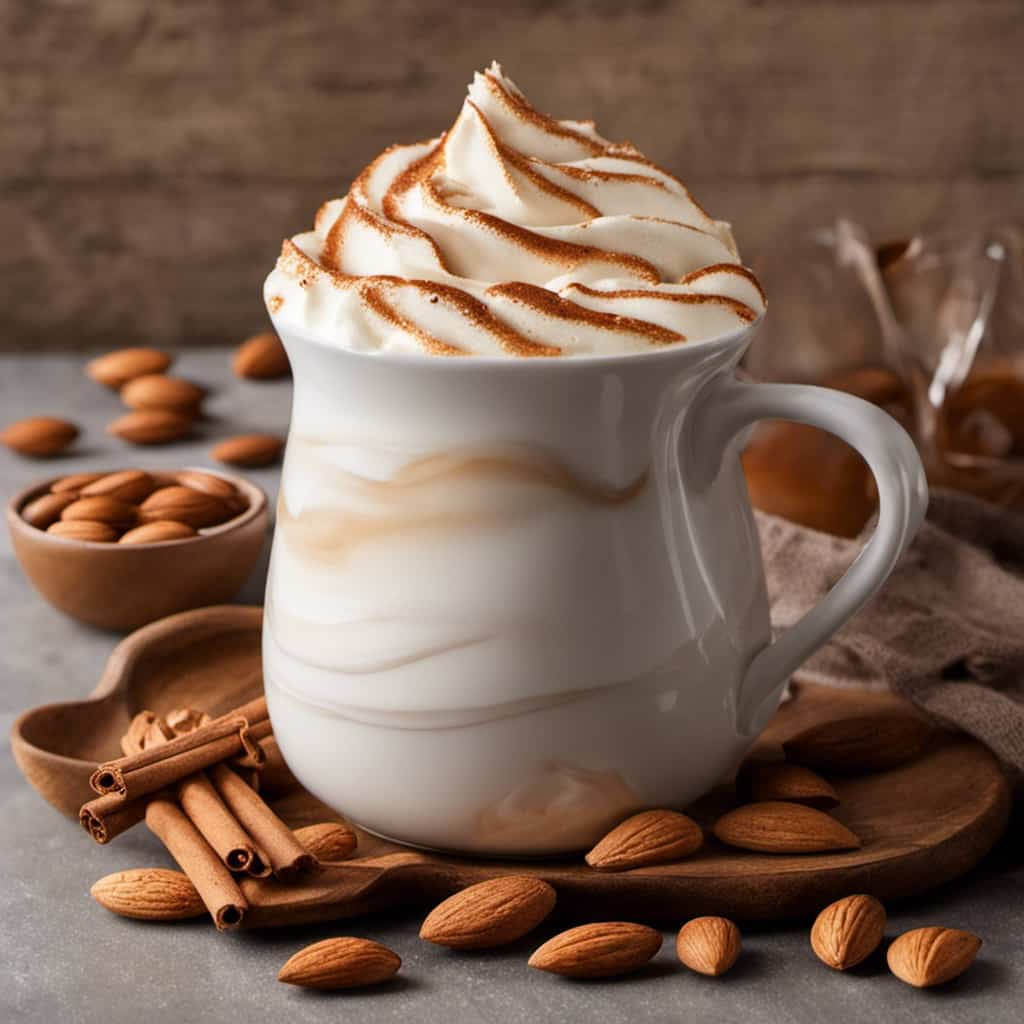
With its unique chemical composition and health benefits, vanilla bean is truly a remarkable ingredient. Now let’s move on to the next section to find out the verdict: does vanilla bean have coffee?
The Verdict: Does Vanilla Bean Have Coffee?
Now let’s determine whether or not vanilla bean contains coffee. Vanilla bean doesn’t contain coffee. It’s derived from the fruit of the vanilla orchid, and its flavor comes from the compounds found in the bean itself.
Here are some key points to consider about vanilla bean:
- Vanilla bean is commonly used in baking and cooking to add a rich, sweet flavor to dishes.
- It’s often used in desserts such as cakes, cookies, and ice cream.
- Vanilla bean has a natural fragrance and can enhance the aroma of baked goods.
- In addition to its taste and smell, vanilla bean also offers some health benefits. It contains antioxidants that can help reduce inflammation and improve heart health.
Frequently Asked Questions
How Is Vanilla Bean Grown and Harvested?
Vanilla bean farming techniques involve careful cultivation and harvesting. The process requires specific temperature and humidity conditions to ensure optimal growth. We use traditional methods to produce high-quality vanilla beans for various culinary purposes.
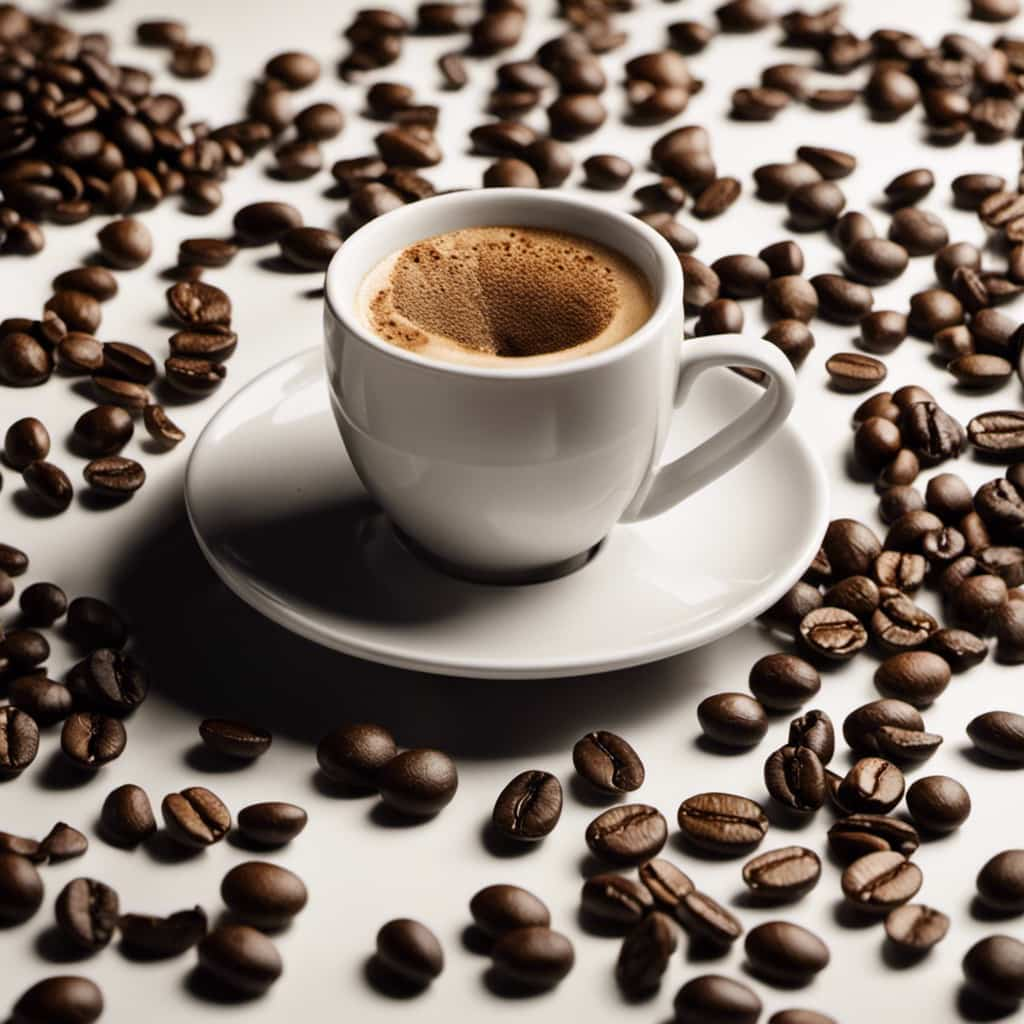
What Are the Different Types of Vanilla Bean Available in the Market?
Different flavors of vanilla bean are available in the market, each with its own unique taste and aroma. From Madagascar to Tahitian, these varieties can enhance a wide range of desserts and baked goods. Discover the best recipes using vanilla bean.
Can Vanilla Bean Be Used as a Substitute for Coffee?
Vanilla bean is a versatile flavoring agent that can be used in baking. It adds a rich, sweet taste to desserts and beverages. However, it does not contain coffee and cannot be used as a substitute for it.
Are There Any Health Benefits Associated With Consuming Vanilla Bean?
Vanilla bean is a versatile ingredient that can enhance the flavor of various recipes. Additionally, it is known for its potential health benefits and is commonly used in skincare products.
How Should Vanilla Bean Be Stored to Maintain Its Freshness and Flavor?
Storing techniques and preserving methods are important to maintain the freshness and flavor of vanilla bean. Proper storage in an airtight container, away from heat and light, will help preserve its quality for longer periods.
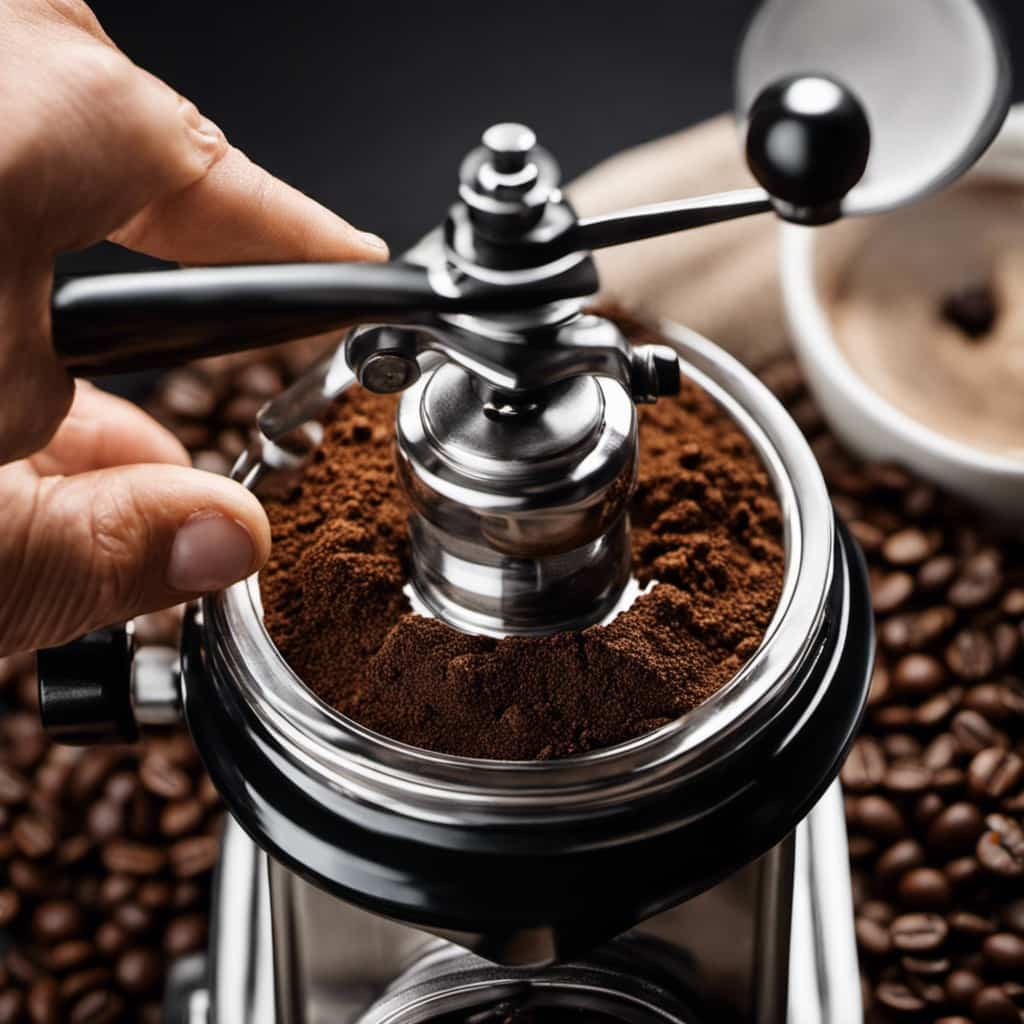
Conclusion
In conclusion, vanilla bean doesn’t have coffee. While both vanilla and coffee have distinct flavors and aromas, they come from different sources.
Vanilla bean is derived from the orchid plant, while coffee beans are the seeds of the coffee plant. Although they can be paired together in various culinary creations, vanilla and coffee are separate entities when it comes to their composition.
So next time you enjoy the rich and smooth taste of vanilla, remember that it’s all about the beans, but without the coffee.
Justin is a seasoned author, coffee and tea enthusiast, and an essential member of the Cappuccino Oracle team. With a keen appreciation for the complexities of coffee, coffee alternatives, and tea, Justin has dedicated his professional career to exploring these realms and sharing his insights with readers worldwide.
Justin’s immersion in the world of coffee, coffee alternatives, and tea began at a young age, kindling a passion that extended beyond mere consumption. This love for these beverages led him to combine his talent for writing with his devotion to coffee and tea, bringing him to Cappuccino Oracle as a dedicated author.
-

 Coffee Basics4 days ago
Coffee Basics4 days agoThe Ultimate Guide To Buying Nespresso Pods: Where And How?
-

 Coffee Basics7 days ago
Coffee Basics7 days ago11 Best Medium Roast Coffees For Your Perfect Cup
-

 Coffee Basics7 days ago
Coffee Basics7 days agoStarbucks Venti Drinks: Customization And Pricing Guide
-

 Coffee Basics3 days ago
Coffee Basics3 days agoPerfect Your Espresso With Puck Screens: A Barista’s Secret
-

 Cappuccino Oracle Selected Reviews1 day ago
Cappuccino Oracle Selected Reviews1 day agoSmeg Knife Block Review Review [2024]
-

 Coffee Basics6 days ago
Coffee Basics6 days agoWhat Is Half-Caff Coffee? (And How Much Caffeine Is In It?)
-

 Coffee Basics6 days ago
Coffee Basics6 days ago9 Best Ground Coffee Brands For Your Perfect Cup
-

 Coffee Basics3 hours ago
Coffee Basics3 hours agoCan I Drink Coffee After Botox














